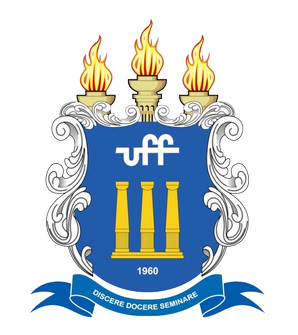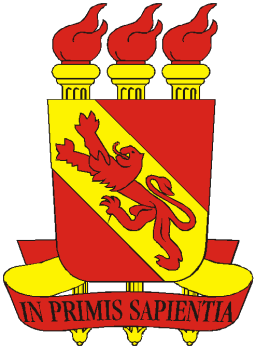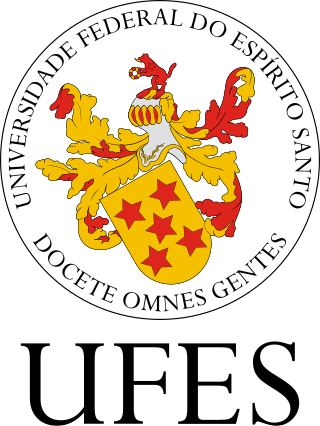
The Fluminense Federal University is a Brazilian public higher education institution located mainly in Niterói and in other cities of Rio de Janeiro state. It was first established on December 18, 1960, with the name of Universidade Federal do Estado do Rio de Janeiro (UFERJ), through an integration of different academic colleges in the city of Niterói. On November 5, 1965, the current name became official.

The Federal University of Rio de Janeiro (UFRJ), alternatively known as University of Brazil, is a public research university in Rio de Janeiro, Brazil. It is the largest federal university in the country and is one of the Brazilian centers of excellence in teaching and research.

São Paulo State University is a public university run by the state government of São Paulo, Brazil.

Federal University of Pernambuco is a public university in Recife, Brazil, established in 1946. UFPE has 70 undergraduate courses and 175 postgraduate courses. As of 2007, UFPE had 35,000 students and 2,000 professors. The university has three campuses: Recife, Vitória de Santo Antão, and Caruaru. Its main campus, Campus Reitor Joaquim Amazonas, is located in western Recife, in the Cidade Universitária neighborhood. The Recife Law School, established in 1827, is located downtown.

The University of Pernambuco is a public state university located in Recife, Pernambuco, Brazil.

Maricá is a municipality located in the Brazilian state of Rio de Janeiro.

The Pontifical Catholic University of Rio Grande do Sul is a private non-profit Catholic university. With campuses in the Brazilian cities of Porto Alegre and Viamão, it is the largest private university of the state of Rio Grande do Sul and the first university founded by the Catholic religious institute of the Marist Brothers. PUCRS is considered the best private university of Brazil's Southern Region by the Ministry of Education (MEC), and one of the best private universities in the country, with FGV, PUC-Rio and the PUC-SP.
The Nova Iguaçu Volcano is located in the state of Rio de Janeiro, Brazil, in an area of volcanic rocks at the north-eastern border of the Mendanha massif. Klein and Vieira proposed the site to be an extinct volcano with a volcanic cone, volcanic crater, and volcanic bomb. Scientific journals have studied the volcanic geology of the area, identifying the rocks of volcanic appearance as constituted of subvolcanic intrusive rock bodies. The Nova Iguaçu volcano theory is now extinct in academic communities, but the myth continues in sightseeing promotion groups.

Exame Nacional do Ensino Médio, shortened as Enem, is a non-mandatory, standardized Brazilian national exam, which evaluates high school students in Brazil. The ENEM is the most important exam of this kind in Brazil, with more than 8.6 million registered candidates in 2016. It is the second largest in the world after China's National Higher Education Entrance Examination.

The Federal Rural University of Rio de Janeiro is a public university located in Seropédica in the State of Rio de Janeiro, Brazil. It possesses the largest campus among Latin American universities and is known for being the first university to offer agriculture related courses in Brazil.

The Federal University of Espírito Santo is a federal university with headquarters in the city of Vitória, capital of Espírito Santo state, in Brazil.

Luís Roberto Barroso is a Brazilian law professor, jurist, Justice and President of the Supreme Federal Court of Brazil, having been nominated to the position by President Dilma Rousseff in 2013. Between 2020 and 2022, Barroso also served as President of the Superior Electoral Court.

Deutsche Schule Rio de Janeiro is a German international school in Botafogo, Rio de Janeiro, Brazil. It serves levels Kindergarten/Educação Infantil through klasse 12/turma 12. It is located in the former US Embassy.

Flávio Nantes Bolsonaro is a Brazilian politician, lawyer and entrepreneur who is the eldest child of the 38th President of Brazil, Jair Bolsonaro.

Camila Jourdan is a Brazilian philosopher, anarchist activist, and university professor. A specialist in the thought of Ludwig Wittgenstein and a teacher at Rio de Janeiro State University (UERJ), she is also known for being the target of a flawed prosecution by Brazilian authorities for her participation in the 2014 protests in Brazil, where she was accused by the country's security forces of preparing and making Molotov cocktails. Initially sentenced to six years in prison, she was ultimately fully acquitted in 2024 by the Supreme Federal Court.















